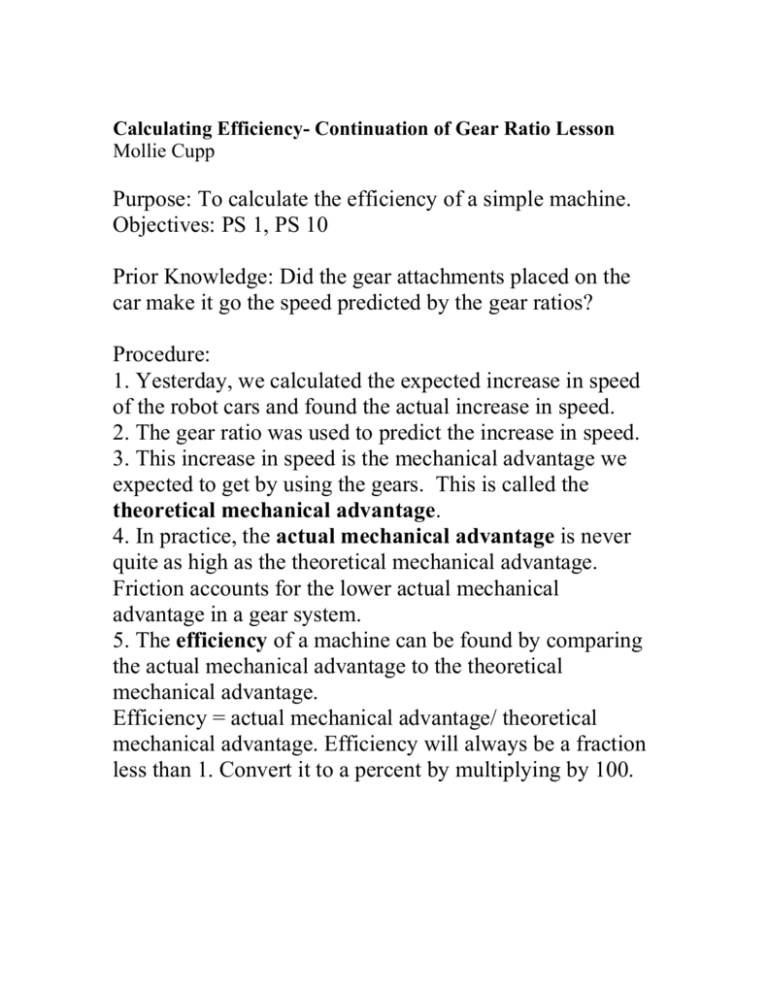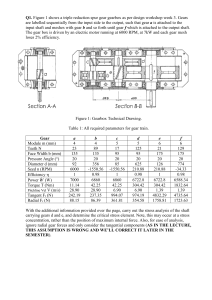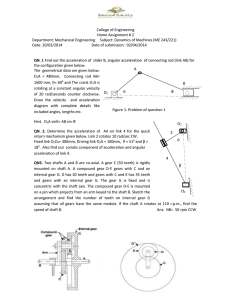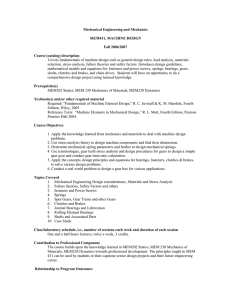Calculate the Speed of the Robot Car
advertisement

Calculating Efficiency- Continuation of Gear Ratio Lesson Mollie Cupp Purpose: To calculate the efficiency of a simple machine. Objectives: PS 1, PS 10 Prior Knowledge: Did the gear attachments placed on the car make it go the speed predicted by the gear ratios? Procedure: 1. Yesterday, we calculated the expected increase in speed of the robot cars and found the actual increase in speed. 2. The gear ratio was used to predict the increase in speed. 3. This increase in speed is the mechanical advantage we expected to get by using the gears. This is called the theoretical mechanical advantage. 4. In practice, the actual mechanical advantage is never quite as high as the theoretical mechanical advantage. Friction accounts for the lower actual mechanical advantage in a gear system. 5. The efficiency of a machine can be found by comparing the actual mechanical advantage to the theoretical mechanical advantage. Efficiency = actual mechanical advantage/ theoretical mechanical advantage. Efficiency will always be a fraction less than 1. Convert it to a percent by multiplying by 100. Speed of Car without gears _____________ Gears Gear Ratio Theoretical Actual Mechanical Mechanical Advantage Advantage 8 and 24 Efficiency 16 and 16 12 and 20 Assessment: What was the efficiency of each of the gear combinations? What can be done to increase the efficiency of a machine? What effect would increasing the number of gears have on the efficiency of a gear system?



![Machine Elements [Opens in New Window]](http://s3.studylib.net/store/data/009054465_1-76bd66345967cd60934cd86eccae6fad-300x300.png)







